Ag is one of the cheapest noble metals which is extensively used in the decoration or doping of semiconducting metal oxides (SMOs) to boost the overall gas-sensing performances of nanostructured SMOs. This is due to the electronic and chemical sensitization of Ag nanoparticles.
- Ag
- decoration/loading
- doping
- gas sensor
- sensing mechanism
1. Ag-Decorated/Loaded Acetone (CH3COCH3) Gas Sensors
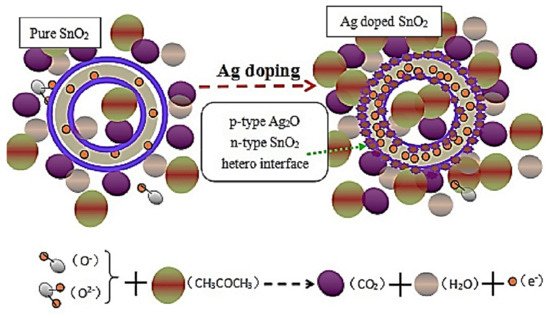
2. Ag-Decorated/Loaded Chlorine (Cl2) Gas Sensors
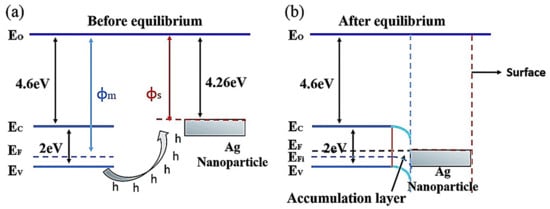
3. Ag-Decorated/Loaded Acetylene (C2H2) Gas Sensors
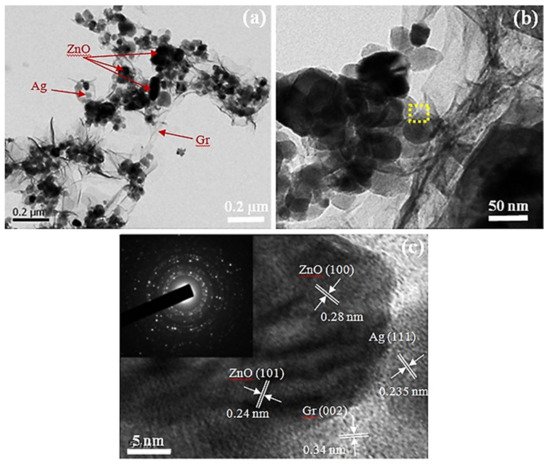
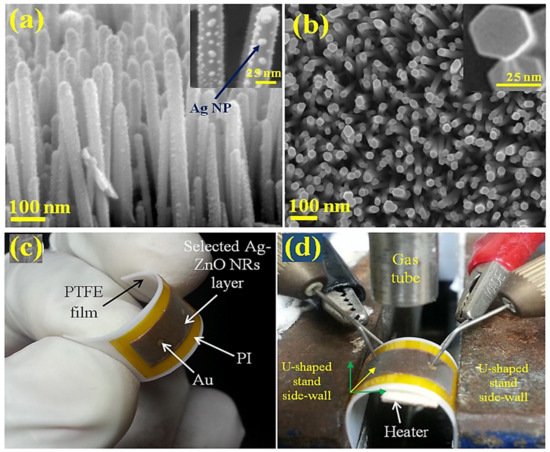
4. Ag-Decorated/Loaded Triethylamine (TEA) Gas Sensors
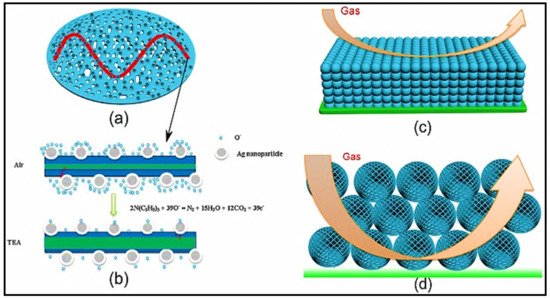
5. Ag-Decorated/Loaded Formaldehyde (HCHO) Gas Sensors

6. Ag-Decorated/Loaded Carbon Monoxide (CO) Gas Sensors
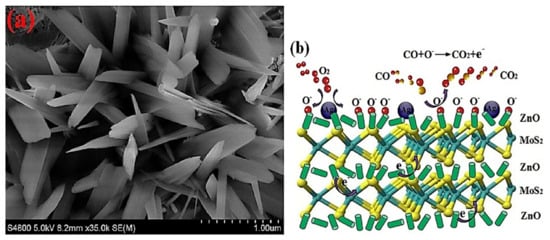
7. Ag-Decorated/Loaded Ethanol (C2H5OH) Gas Sensors
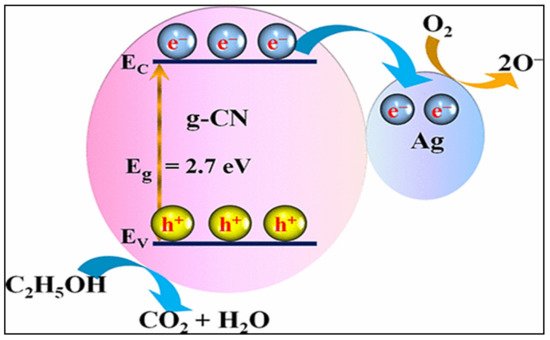
8. Ag-Decorated/Loaded Nitrogen Dioxide (NO2) Gas Sensors
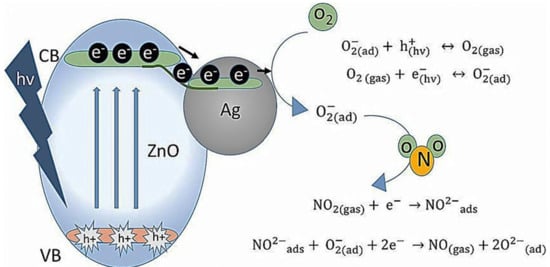

9. Ag-Decorated/Loaded Methyl Mercaptan (CH3SH) Gas Sensors
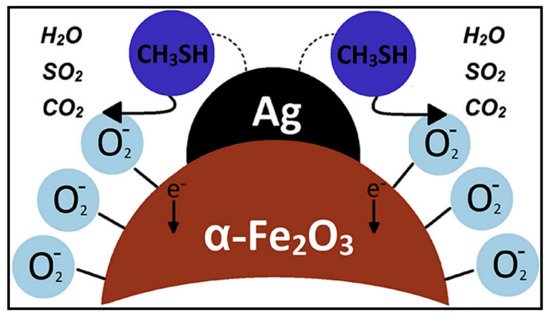
The gas-sensing performances of chemiresistive sensors, such as SMOs and related composites, can be enhanced by Ag doping owing to the catalytic activity and electronic/chemical sensitization effects of Ag. As an effective catalyst, Ag can attract abundant O2 molecules from the air and transfer them to the surfaces of SMOs, accordingly promoting the capture of electrons from SMOs by O2 molecules. Moreover, the higher electrical conductivity of Ag NPs facilitated rapid electron transfer and thereby improved the sensor response. Therefore, Ag may be an excellent choice as a sensitizer to improve the sensing performances of chemiresistive sensors as it offers additional active adsorption sites and charge transfer pathways to enhance surface reactions. Generally, the introduction of Ag in an optimal amount into the sensing material can lead to the best sensing properties, and a bell-shaped relationship typically exists between the sensor response and the addition amount of Ag. Due to the low cost of Ag than that of other noble metals, the incorporation of Ag into gas sensors is a highly promising strategy to not only reduce the overall price of these sensors but also enhance their sensing properties.
This entry is adapted from the peer-reviewed paper 10.3390/s21196454
